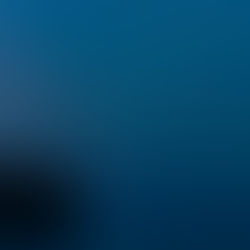Making use of the FREE Macro Background from B&H Photo
- Don Tredinnick
- Feb 1, 2022
- 3 min read

Before you get too excited, I'm referring to the bubble wrap that B&H Photo uses to pack their shipments. It turns out that bubble warp makes for a fantastic macro background.
What I like about the bubble wrap from B&H is that the bubbles are connected to each other making them almost impossible to pop. This makes it very easy to store in my macro equipment bin.
At this point you are probably wondering about why I would use bubble wrap for a background. The answer is that it is very reflective. If I shine a light on the bubble wrap, the light reflected off the bubbles adds some interest without being overwhelming.
For best results you need to have a light dedicated to lighting up the bubbles. I like to use a gel to make the color standout a little from the light that is being used to illuminate the subject. The Lume Cubes are great for this type of lighting. Not only do they come with a variety of gels, but they also have a barn door attachment. This helps me make sure that the light is not hitting my main subject.
Setting up the shot
For the main subject, I needed to provide light that will not interfere with the background. This comes down to camera angle and light angles. Let's walk through the steps that I used to create this shot:

The first step is to "build" the background. For this shot that meant taping some of the bubble wrap to the wall, and placing some on the surface of the file cabinet.

The bubble wrap on the cabinet allows the color from the light hitting the background to move underneath the subject. I can also take advantage of the bubble wrap to tilt the subject forward slightly. The next step is to turn on the lights and set-up the shot.

Capturing the Image
My initial thought was to try and take this photo in one shot. I wanted only the front three raspberries to be in focus. I closed the aperture to f/22 and adjusted the shutter speed. The result wasn't quite what I had in mind:

The background was a little too busy, and the top raspberry was not as sharp as I wanted. The sharpness I could fix. The background was a problem because shooting at the small aperture made the bubbles too small. I also had the light on the background just a little too bright.
I changed my camera settings to f/8, 0.4 seconds. I also reduced the light coming from both light sources. By going to f/8, the depth of field becomes much shallower. This causes the bubbles to actually look bigger since they are not as well defined. The challenge is that now I lose quite a bit of sharpness in the subject.

I like the background, but need to come up with more depth of field. I could try moving back and cropping in, but given my set-up, that was not an option. Besides, that would make the bubble reflections practically go away. Instead I decided to use focus stacking.
With focus stacking, I can take a set of images with the point of focus set slightly deeper into the photo. This allows me to control which elements need to be sharp, and which ones are soft. I ended up with 20 images that I then combined using Photoshop. After some slight edits and a little bit of clean-up, I ended up with the following image:

To learn more
If you would like to learn more about macro photography, please register for one of my macro classes at either the University of Minnesota Landscape Arboretum, or Centennial School District Community Education. More information can be found by clicking on the Workshops tab of the Frozen Hiker Photography website.







































Comments